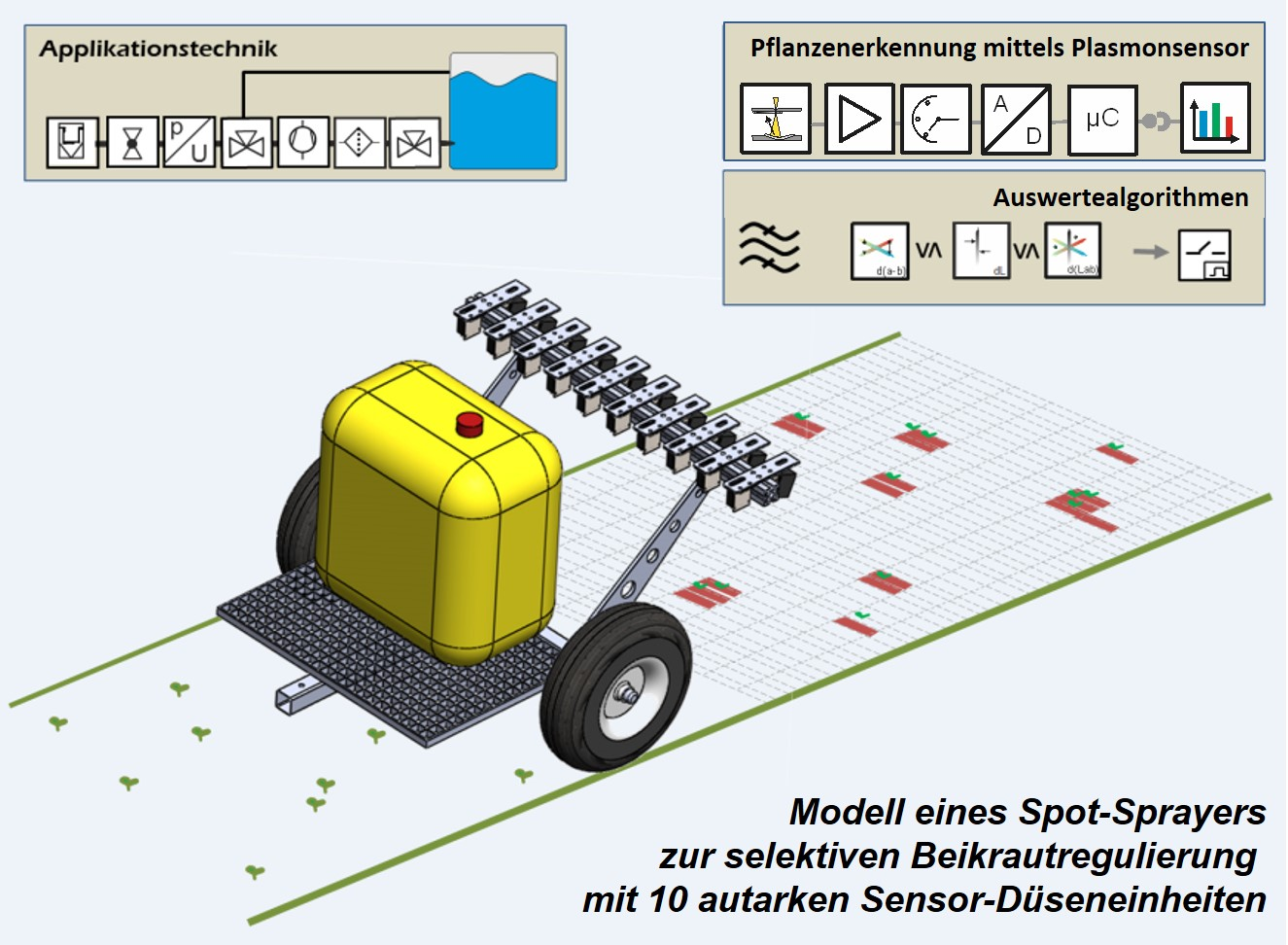Implementation of the approach by integrating multi-channel optical sensors into CMOS technology
The aim of the INFIMEDAR project is therefore the research of miniaturized, highly integrated and inexpensive optical sensors with a suitability for a wide range of light spectrum for use in agriculture. A new type of technology is used to implement the required color filters for the optical sensors, so-called "plasmonic filters". These filters consist of metallic structures which are smaller than the wavelength of the light and which, depending on their material and their geometry, can selectively attenuate, i.e. filter, certain wavelengths of incident light.
A major innovation of the project is design, simulation and manufacturing of these optical nanostructures. These are manufactured directly in the context of semiconductor manufacturing in metal layers of the CMOS process without further manufacturing steps (postprocessing) such as. B. the separation of
Thin film filter is required. The resulting monotlithically integrated sensor systems include a large one due to this integration and miniaturization
Number of different functionalities in a small and inexpensive system consisting of plasmonic filters, optical detectors, electrical signal processing and suitable interfaces for data transmission.
Subsequently, an evaluation of possible uses of the technology in the field of smart farming and agricultural robotics for various applications in agriculture takes place. These include:
- Weed detection and differentiation for crop detection in the field,
- Determination of physical properties (e.g. coloring) of agricultural products to optimize harvesting and post-harvest processes,
- Determination of physiological conditions: water, sugar, starch and protein content to determine the quality properties of food.
The consortium of the INFIMEDAR project funded by the BMBF consists of the following parties:
PREMOSYS GmbH, X-FAB Semiconductor Foundries GmbH, Rheinische Friedrich-Wilhelms-Universität Bonn, Productivity Engineering GmbH and Fraunhofer Institute for Integrated Circuits (IIS)
Fraunhofer IIS is responsible for the design and simulation of the spectral properties of the filters, the IC design of the sensors, and for the optical characterization of the multispectral sensors.

![BMBF_CMYK_Gef_M [Konvertiert]](/en/ff/sse/sensor-solutions/forschung/infimedar/jcr:content/contentPar/sectioncomponent/sectionParsys/textwithinlinedimage/imageComponent1/image.img.jpg/1581967033061/BMBF-ENG.jpg)